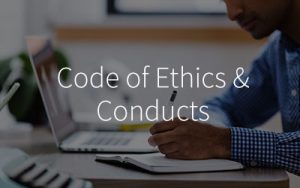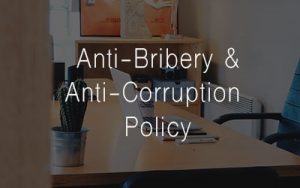Audit Committee
Tiew Chee Ming
Chairman
Datuk Wira Rahadian Mahmud Bin Mohammad Khalil
Member
Low Kim Leng
Member
Terms of Reference for Audit Committee
1. OBJECTIVE
The primary objective of the Audit Committee is to establish a documented, formal and transparent procedure to assist the Board in fulfilling its fiduciary responsibilities relating to corporate accounting, financial reporting practices, system of internal control, the audit process and the process of monitoring compliance with laws and regulations.
2. COMPOSITION
The members of Audit Committee shall be appointed by the Board from amongst the Directors of the Company and shall comprise of at least three (3) members, all of whom must be Non-Executive Directors, with a majority of them being independent. The Board shall at all the times ensure that at least one (1) member of the Audit Committee:
- must be a member of the Malaysian Institute of Accountants (“MIA”); or
- if he is not a member of the MIA, he must have at least three (3) years’ working experience and:
- passed the examinations specified in Part I of the First Schedule of the Accountants Act 1967; or
- must be a member of one of the associations of accountants specified in Part II of the First Schedule of the Accountants Act 1967; or
- fulfils such other requirements as prescribed or approved by Bursa Malaysia Securities Berhad.
The Audit Committee shall elect a Chairman from among its members and the elected Chairman shall be an Independent Director.
No alternate director shall be appointed as a member of the Audit Committee. The term of office and performance of the Audit Committee and each of its members shall be reviewed by the Board annually to determine whether the members have carried out their duties in accordance with their terms of reference.
If a member of the Audit Committee resigns or for any other reason ceases to be a member with the result that the number of members is reduced to below three (3), the Board shall, within three (3) months from the date of that event, appoint such number of new members as may be required to make up the minimum number of three (3) members.
3. AUTHORITY
- The Audit Committee is authorised by the Board to investigate any matter within the Audit Committee’s terms of reference. It shall have full and unrestricted access to any information pertaining to the Group and shall have the resources it requires to perform its duties. All employees of the Group are required to comply with the requests made by the Audit Committee.
- The Audit Committee is authorised by the Board to obtain external legal or independent professional advice and secure the attendance of outsiders with relevant experience and expertise if it considers this necessary, the expenses of which will be borne by the Company.
- The Audit Committee shall have direct communication channels with the external auditors and person(s) carrying out the internal audit function or activity.
- The Audit Committee shall be able to convene meetings with the external auditors, the internal auditors or both, excluding the attendance of other Directors and employees of the Company, whenever deemed necessary, in order to enable the Audit Committee and the external auditors or the internal auditors or both, to discuss problems and reservations and any other matter the external auditors or internal auditors may wish to bring up to the attention of the Audit Committee.
- The Internal Auditors report directly to the Audit Committee and shall have direct access to the Chairman of the Audit Committee on all matters of control and audit. All proposals by management regarding the appointment, transfer and removal of senior staff members of the Internal Audit of the Group shall require prior approval of the Audit Committee. The Audit Committee is also authorised by the Board to obtain information on any resignation of internal audit staff members and provide the staff member an opportunity to submit his reasons for resigning
4. DUTIES AND RESPONSIBILITIES
In fulfilling its primary objectives, the Audit Committee shall undertake, amongst others, the following duties and responsibilities:
(a) Financial Reporting
To review the quarterly and annual financial statements of the Group prepared by the management, where necessary, together with the external auditor, focusing particularly on:
- Any significant changes to accounting policies and practices;
- Significant matters highlighted including financial reporting issues, significant judgments made by management, significant and unusual events or transactions, and how these matters are addressed;
- Significant adjustments arising from the audit;
- Compliance with accounting standards and other legal requirements; and
- Going concern assumption.
(b) Risk Management and Internal Control
- To consider the effectiveness of the internal control system and risk management framework adopted within the Group and to be satisfied that the methodology employed allows identification, analysis, assessment, monitoring and communication of risks in a regular and timely manner that will allow the Group to mitigate losses and maximize opportunities;
- To assess processes and procedures to ensure compliance with all laws, rules and regulations, directives and guidelines established by the relevant regulatory bodies;
- To ensure that the system of internal control is soundly conceived and in place, effectively administered and regularly monitored;
- To cause reviews to be made of the extent of compliance with established internal policies, standards, plans and procedures;
- To obtain assurance that proper plans for control have been developed prior to the commencement of major areas of change within the Group;
- To recommend to the Board steps to improve the system of internal control derived from the findings of the internal and external auditors and from the consultations of the Audit Committee itself; and
- To report to the Board of Directors any suspected frauds or irregularities, serious internal control deficiencies or suspected infringement of laws, rules and regulations which come to its attention and are of sufficient importance to warrant the attention of the Board.
(c) Internal Audit Function
- To review the effectiveness of internal audit function, including the ability, competency and qualification of the internal audit team and/or outsourced internal auditors (if any) to perform its duties;
- To review the adequacy of the scope, functions competency and resources, and that it has the necessary authority to carry out its work;
- To review and approve the internal audit plan and the internal audit report and, where necessary, ensure that appropriate actions are taken on the recommendations made by the internal audit function;
- To receive and review on a regular basis the reports, findings and recommendations of the internal audit team and/or outsourced internal auditors and to ensure that appropriate actions have been taken to implement the audit recommendations;
- To ensure the internal audit team and/or outsourced internal auditors has full, free and unrestricted access to all activities, records, property and personnel necessary to perform its duties;
- To review any matters concerning the employment or appointment (and re-appointment) of the in-house and/or the outsourced internal auditors (as the case may be) and the reasons for resignation or termination of either party; and
- To request and review any special audit which the Committee deems necessary.
(d) External Audit
- To review the external auditors’ audit plan, nature and scope of the audit plan, audit report, evaluation of internal controls and co-ordination of the external auditors;
- To review the annual performance assessment, including the suitability and independence of the external auditors and make recommendations to the Board, the appointment or re-appointment of the external auditors;
- To assess or determine the suitability and independence of the external auditors, the Audit Committee shall take into consideration of the following:
- the adequacy of the experience and resources of the external auditors;
- the external auditor’s ability to meet deadlines in providing services and responding to issues in a timely manner as contemplated in the external audit plan;
- the nature of the non-audit services provided by the external auditor and fees paid for such services relative to the audit fee; and
- whether there are safeguards in place to ensure that there is no threat to the objectivity and independence of the audit arising from the provision of non-audit services or tenure of the external auditor.
- To review any matters arising concerning the appointment and re-appointment, audit fee and any questions of resignation or dismissal of the external auditors;
- To review the external auditor’s audit report, and management letter and management’s response to the management letter;
- To be advised of significant use of the external auditors in performing non-audit services within the Group, considering both the types of services rendered and the fees, such that their position as auditors are not deemed to be compromised;
- To review the external auditors’ findings arising from audits, particularly any comments and responses in audit recommendations as well as the assistance given by the employees of the Group in order to be satisfied that appropriate action is being taken; and
- To review with the external auditors for the Statement on Risk Management and Internal Control of the Group for inclusion in the Annual Report.
(e) Related Party Transactions/Conflict of Interest Situations
To review any related party transactions and conflict of interest situations that may arise within the Group including any transaction, procedure or course of conduct that raises questions of management integrity.
(f) Audit Reports
To prepare the annual Audit Committee report to the Board which includes the composition of the Audit Committee, its terms of reference, number of meetings held, a summary of its activities and the existence of internal audit services and summary of the activities for inclusion in the Annual Report and to review the Board’s statements on compliance with the Malaysian Code of Corporate Governance for inclusion in the Annual Report.
(g) Other matters
- To verify the allocation of options pursuant to the Share Issuance Scheme or the allocation of shares pursuant to any incentive plan for employees of the Group at the end of each financial years as being in compliance with the criteria which is disclosed to the employees and make a statement in the Annual Report that such allocation has been verified;
- To exercise its powers and carry out its responsibilities as my be required from time to time under the Whistleblower Policy of the Group; and
- To carry out any other function that may be mutually agreed upon by the Audit Committee and the Board.
5. MEETINGS OF THE COMMITTEE
The Audit Committee shall meet at least four (4) times in a financial year, although additional meetings may be called at any time at the Audit Committee Chairman’s discretion. Other than in circumstances which the Chairman of the Audit Committee considers inappropriate, the Executive Directors, Group Accountants, the representatives of the internal auditors and external auditors will attend any meeting of the Audit Committee to make known their views on any matter under consideration by the Audit Committee or which in their opinion, should be brought to the attention of the Audit Committee. Other Board members, employees and external professional advisers shall attend any particular meetings upon invitation by the Audit Committee. Where necessary, the Audit Committee shall meet with the external auditors without the present of any Executive Directors and members of the management.
In the event the elected Chairman is not able to attend a meeting, a member of the Audit Committee shall be nominated as Chairman for the meeting. The nominated Chairman shall be an Independent Non-Executive Director.
Subject to the notice and quorum requirements as provided in the Terms of Reference, meeting of the Audit Committee may be held and conducted through the telephone or any communication equipment which allows all persons participating in the meeting to hear each other. A person so participating shall be deemed to be present in person at the meeting and shall be entitled to vote and be counted in a quorum accordingly.
6. QUORUM
The quorum for a meeting of the Audit Committee shall consist of not less than two (2) members, majority of members present must be Independent Non-Executive Directors.
7. NOTICE OF MEETINGS
Unless otherwise agreed, notice of each meeting confirming the venue, time and date, together with an agenda of items to be discussed, shall be forwarded to each member of the committee, any other person required to attend and all other non-executive directors, no later than seven (7) days before the date of the meeting. Supporting papers shall be sent to committee members and to other attendees as appropriate, at the same time.
8. SECRETARY AND MINUTES
The Company Secretary or his nominee or such other persons authorised by the Board shall act as the Secretary of the Audit Committee. The Company Secretary shall record, prepare and circulate the minutes of the meetings of the Audit Committee and ensure that the minutes are properly kept and produced for inspection if required. The Audit Committee shall report to the Board and the minutes of each meeting shall be tabled to the Board for notation. The expressions “in writing” and “signed” include approval by telefax, telex, cable or telegram by any such member of the Committee.
9. CIRCULAR RESOLUTION
A resolution in writing, signed by a majority of the Audit Committee members present in Malaysia for the time being entitled to receive notice of a meeting of the Audit Committee, shall be as valid and effectual as if it had been passed at a meeting of the Audit Committee duly convened and held. Any such resolution may consist of several documents in like form, each signed by one or more of the members of the Audit Committee.
10. PARTICIPATION IN MEETING BY TELE-CONFERENCING
A Director may participate in a Committee meeting by means of a conference telephone or any communication equipment or device that will allow all persons participating at the meeting to hear and speak with each other and shall be deemed as present at such meeting.
11. REVISION AND UPDATES
This Terms of Reference will be reviewed and updated at least once a year to ensure it remains consistent with the Audit Committee’s objectives and responsibilities.







